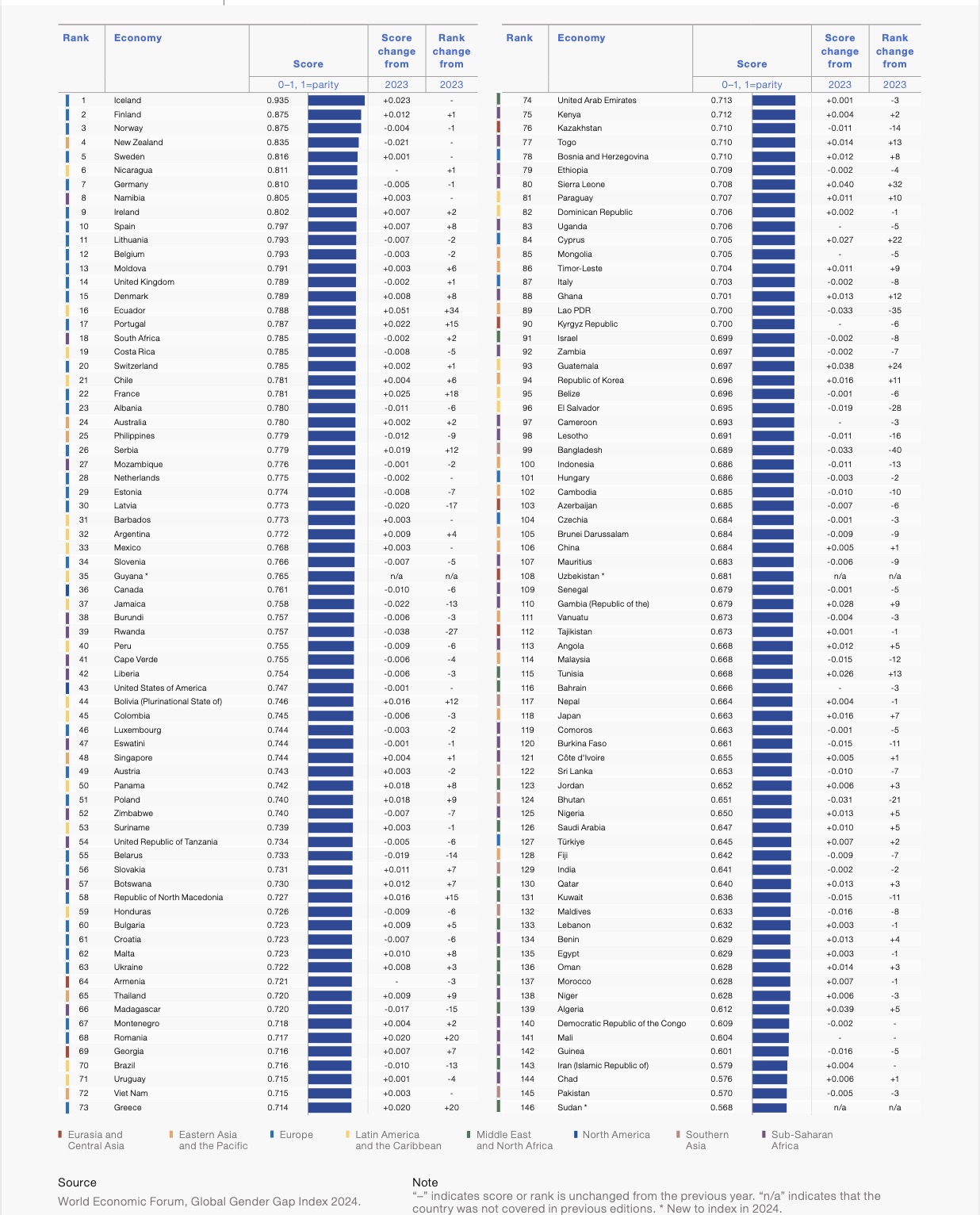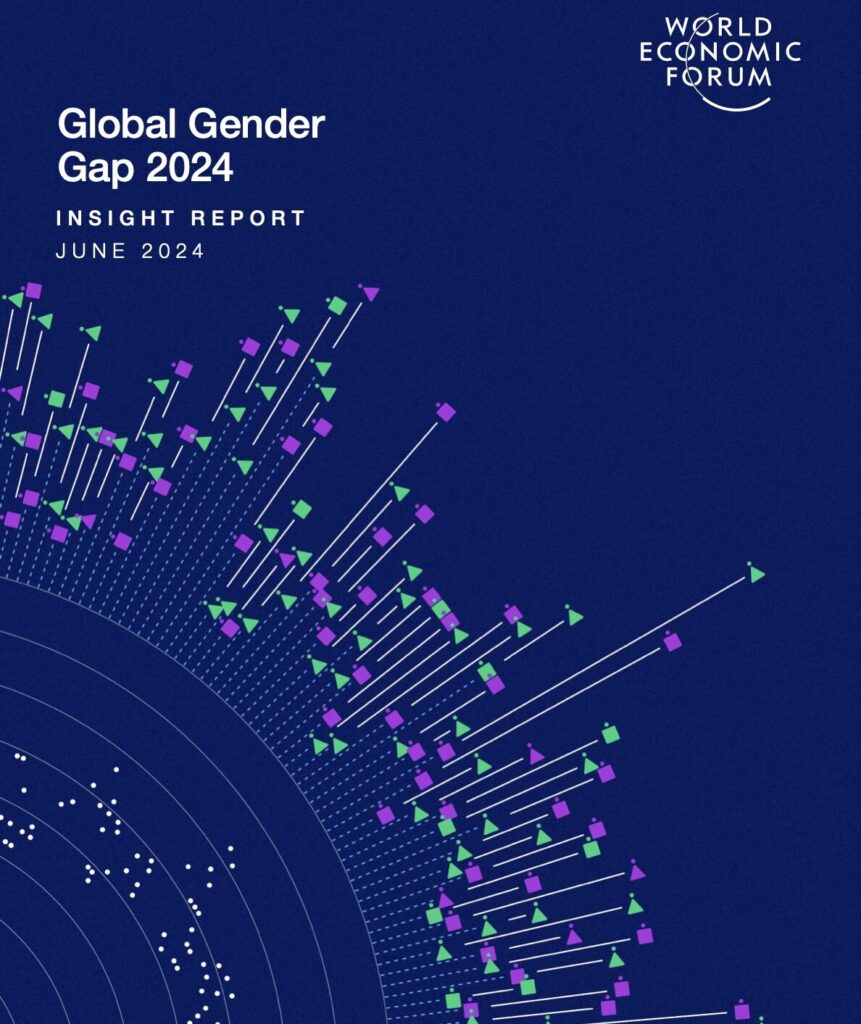Global Gender Parity by 2158? Rethinking Commitments and Reforms Now
The Global Gender Gap Report 2024 provides a detailed assessment of gender equality in 146 countries, quantifying progress and regression in terms of four fundamental measures: economic participation and opportunities, education, health and survival, and political empowerment.
While the overall trend shows incremental and gradual progress, the pace of progress remains short of that which is needed to enable global development objectives in the near term. In 2024, the world’s gender gap narrowed by 68.5%, an increase of a 0.1 percentage points from the previous year. At this pace, gender equality will be reached in 134 years. This is much more than the UN 2030 Agenda for Sustainable Development is targeting.
Perhaps the most surprising fact is how much heterogeneity there is in progress across countries and regions. Iceland remains the global leader in gender equality, ranking first for the fifteenth consecutive year and closing 93.5% of its gender gap. Other Nordic countries remain in high positions, with Finland, Norway, and Sweden in the top five. European countries dominate the top of the index, reflecting long-standing policy commitments to gender equity, especially in political representation and access to education. On the other hand, the regions of the Middle East, North Africa, and South Asia lag behind because women’s political and economic empowerment continues to be constrained by structural barriers.
The four subindices differ in their decomposition with inconsistent trends. The health and survival sector is still the most egalitarian sector of the globe, 96% of the gap closed. Parity has been almost achieved in all countries in principal health outcomes like life expectancy and sex ratio at birth. Next comes education with a closure rate of 94.9%. Even in education, however, full parity has been delayed with the time taken to equality reaching 20 years from 16 years in the previous year’s report. These gaps show that while girls’ access to schooling has improved, there are still gaps in opportunities after schooling, quality, and completion rates.
The Global Gender Gap Index 2024 rankings

The largest gaps are still in economic participation and political empowerment. In the economy, only 60.5% of the gap has been closed. Women now make up 42% of the world’s workforce, but only 31.7% of managerial and senior positions. Although this is a welcome improvement over past years, the day of parity in economic opportunity is still at an estimated 152 years. Although the proportion of women in professional jobs such as legislators, senior officials, and executives trails and rises gradually, reflecting deep-seated bias and barriers along career trajectories. Denial of access to capital, technical facilities, and institutional assistance to women further expands these disparities.
The largest political empowerment gap remains, at a trivial 22.5% closed across the world. Women’s numbers in parliaments and among ministers remain heavily skewed and extremely biased toward a few countries. At the current trend, it will take around 170 years to achieve gender equality in politics. Such slow pace waters down wider societal efforts at inclusive governance and restricts women’s voices when it comes to directly impacting the creation of laws and policies affecting their lives.
Regional disparities point to the uneven terrain of gender equality. Europe leads with 75% regional parity, followed by North America and Latin America. All these have experienced advances in political engagement and economic activity, albeit very uneven across nations. Eastern Asia and the Pacific, as well as Sub-Saharan Africa, are patchy—some making significant progress, others lagging behind. South Asia and Middle East and North Africa remain lowest, with long-standing gender-based labor market exclusions and minimal political participation.
Although the evidence suggests resilience and slow progress, the report concludes that such progress remains too weak and too slow. With new technologies, shifting labor markets, and rising care responsibilities, the gap is potentially widened, unless there are deliberate policies that are implemented. Those nations that have succeeded in closing larger shares of the gender gap are likely to combine long-term investments in gender-responsive policies with efforts to shift social norms and institutional arrangements. The report lastly calls upon policymakers, business, and civil society to take swift and concerted action to accelerate gender parity and to ensure that the gains made are not eroded in the case of economic or political shocks.
–
Cover photo: https://www3.weforum.org/docs/WEF_GGGR_2024.pdf
- By Strategers

